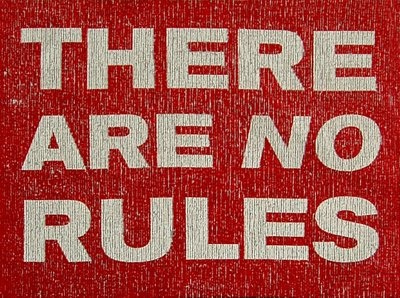Script: PRINCIPLES, Not Rules

In screenplay there are NO rules
Rules say: “things that have to be done a certain way”. Meanwhile principles make reference to what works and has worked for as long as one can remember.
The difference is crucial.
In screenplay, there are no rules, there only exist certain principles that by experience we know have worked and probably will work on the future.
Unexperienced writers
Inexperienced or anxious writers try to do one of two things:
- Follow the “rules” (that do not even exist) with the hope that there is a magic formula that they can follow that will turn their screenplay in a huge success.
- Do not follow any rules.
But the truth is that in order not to follow any rules you have to be an experienced artist. And don’t fool yourself by believing you just were born with tremendous talent and therefore you do not even need to know the principles with which your craft was built.
Principles of screenwriting
Principles are so universal that no matter where you come from or what story you are trying to tell, it can have an emotional impact in any part of the world for any given generation.
When writing a screenplay, this is achieved by creating archetypical stories. This is the principle that works and has worked for as long anyone can remember and imagine.
An archetypical story does not mean a story full of stereotypes.
An archetypical story creates places and characters so rare that our sight is pleased with every detail, while the story reveals conflicts so human that they can travel from culture to culture. And it is through those conflicts and those characters that we see ourselves portrayed. It is through this mental “impersonation” of another “human being”, through their conflicts, their emotions, their character, that we find life and we find ourselves.
Because that is the important part of the whole process of making a movie:
THE AUDIENCE and the principles of screenwriting
Without the audience, this whole process that takes years of one’s life, huge amounts of work and thought, is of no value.
The audience should always be in the mind of the creator.
But not in an abstract way of a bunch of faceless people staring at a blank screen but more like oneself. You should picture yourself watching your movie for the first time, without knowing what it is all about and who had made it.
In this way, you will make a film that can explain itself and that hopefully will emotionally/ intellectually impact people like yourself.
That is the reason why you should always have respect for the audience, have respect for yourself and try to make an original piece of art that transcends in meaning and originality every other meaningless and unoriginal movie that gets made.
When I say original I am not talking about being eccentric.
It is not about showing of what you can do but about serving the story, the meaning of the story and enhance it in every original way you can think of that serves the purpose of the story and that you find strictly necessary.


You’ve finished your Screenplay and IT SUCKS – WHAT to do
Ale Fito SCREENPLAY Leave a Comment on You’ve finished your Screenplay and IT SUCKS – WHAT to do
You’ve finished your Screenplay and IT SUCKS – WHAT to do This post will be structured in a way so that you ask yourself the necessary questions that propel you to make the necessary changes to your first, second or third draft that you don’t get to make it work. Questions that need an answer: […]

Complex VS Complicated movies
Ale Fito SCREENPLAY Leave a Comment on Complex VS Complicated movies
Complex VS Complicated movies You might be thinking that there is no difference between complex and complicated movies. But in order to make that assumption we need to be sure what does complex and complicated really mean. Complicated means difficult to analyze, understand or explain. Complex means composed of many related parts, having a complicated […]

2. Act Design by Robert McKee
Ale Fito SCREENPLAY Leave a Comment on 2. Act Design by Robert McKee
2. Act Design by Robert Mckee Progressive complications Progressive complications it’s the second element of the five-part design of a story that goes from the Inciting Incident to the Crisis/Climax. In a story it’s where the the plot gets more complicated and more conflict happens because there are more challenges for our main character/s to […]

1. The Inciting Incident by Robert Mckee
Ale Fito SCREENPLAY Leave a Comment on 1. The Inciting Incident by Robert Mckee
The Inciting Incident By Mckee Every story has five major parts: Inciting Incident: the primary cause that follows that puts in motion the other four elements. Progressive complications Crisis Climax Resolution To master the Inciting incident you need to master setting. The World Of The Story The world of the story happens in a certain […]

3 MUST Reads For Writting a Screenplay
Ale Fito SCREENPLAY Leave a Comment on 3 MUST Reads For Writting a Screenplay
3 MUST Reads For Writting a Screenplay There are many books that you could read that will have a lot of valuable information when writting a screenplay like “Save the Cat”, “Creating Character Arcs” or “The Hero’s Journey” but here we want to focus on 3 that we believe are the ones that after reading […]

4 KEY Tips for Scene Design
Ale Fito SCREENPLAY Leave a Comment on 4 KEY Tips for Scene Design
4 KEY Tips for Scene Design Turning Point effects, Setup/Payoffs, Emotional Dynamics and Choice Scene design To understand how scenes are built, there are 4 main points that we have to go over: Turning points Setups/Payoffs Emotional Dynamics Choice These are the main principles inside a scene that a screenwriter should master according to Robert […]

Añadir un comentario